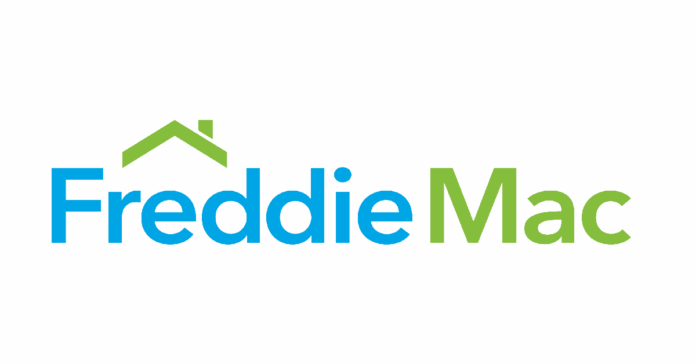WASHINGTON, July 23, 2025 – The Federal Home Loan Mortgage Corporation (FMCC), widely known as Freddie Mac, is at the epicenter of burgeoning investor interest as discussions surrounding the culmination of its 17-year conservatorship reach a fever pitch. As the U.S. economy experiences robust growth, buoyed significantly by the recently enacted “One Big Beautiful Bill,” analysts and policymakers are increasingly looking to a potential government exit strategy for Freddie Mac, drawing parallels to the highly successful divestment from American International Group (AIG) following the 2008 financial crisis. Such a move could unlock substantial value for the housing finance behemoth, potentially sending its stock soaring to unprecedented levels.
Freddie Mac, established in 1970 with the critical mission of supporting the secondary mortgage market, plays an indispensable role in the stability and accessibility of U.S. housing. Its core functions include purchasing mortgages from lenders, securitizing them into mortgage-backed securities, and providing guarantees to investors, thereby ensuring a steady flow of capital into the housing market. Placed under the conservatorship of the Federal Housing Finance Agency (FHFA) in September 2008 amidst the throes of the housing meltdown, Freddie Mac received a substantial $71.6 billion in Treasury bailout funds. In exchange for this crucial intervention, the U.S. government acquired warrants for 79.9% of Freddie Mac’s common stock and implemented a highly controversial profit sweep, a mechanism that has since diverted nearly all of the company’s earnings to the Treasury. As of July 23, 2025, FMCC trades at approximately $6.75 on the over-the-counter market, a valuation that many experts contend significantly undervalues the company’s true potential, given the lingering uncertainties surrounding its conservatorship status.
The optimism surrounding Freddie Mac’s future is not merely speculative; it is firmly rooted in the company’s consistently strong financial performance. In its first-quarter 2025 earnings report, Freddie Mac announced a net income of $2.8 billion, representing a commendable 1% increase year-over-year. This was driven by robust revenues of $5.9 billion, a 2% increase over the same period last year. The company’s mortgage portfolio continued its impressive expansion, growing to over $3.6 trillion. This included single-family loans totaling $3.582 trillion (up 2%) and a thriving multifamily segment at $467 billion (up 5%). Critically, Freddie Mac’s net worth climbed to $62.4 billion from $59.6 billion at the close of 2024, a testament to its strong financial health and prudent risk management. This positive trajectory is further underscored by remarkably low delinquency rates, with single-family loans reporting a mere 0.55% delinquency rate. The company’s continued commitment to its mission was evident in its funding of mortgages for over 313,000 families in the quarter, highlighting its pivotal role in promoting affordable housing across the nation.
Bill Ackman’s Vision: Freddie Mac’s Potential Path to $50-$90 Stock Price
The renowned investor Bill Ackman, through his firm Pershing Square Capital Management, has long championed the significant undervaluation of Freddie Mac, and his valuation of the company’s potential stock price from $50 to $90 within five years has ignited considerable interest. This projection hinges on a crucial assumption: the U.S. government executing an exit from conservatorship that mirrors its highly successful divestment from AIG after the 2008 crisis.
Current valuations, when analyzed through sophisticated financial models, lend substantial credence to Ackman’s bold claims. Using discounted distributable earnings models that meticulously account for warrant dilution (a total of 3.233 billion diluted shares), both the “Buffett-Inspired” and “McGrew” valuation methods independently arrive at an intrinsic value of $71.32 per share.
| Stock Ticker | Valuation Method | Intrinsic Value per Share | Price with 40% Margin of Safety | Last Closing Price | Valuation Status |
| FMCC | Buffett-Inspired | $71.32 | $42.79 | $6.32 | Screaming Buy |
| FMCC | McGrew | $71.32 | $42.79 | $6.32 | Screaming Buy |
Export to Sheets
Note on valuations: Intrinsic values were calculated using trailing twelve-month distributable earnings (approximated as net income of $11.914 billion) projected at a conservative 3% constant growth for 10 years (due to historical CAGR below 10%), with a 2.5% perpetual growth rate and an 8% discount rate. The terminal value is discounted to present, yielding an enterprise value of $230.59 billion, which is then divided by 3.233 billion diluted shares. A 40% margin of safety is applied for conservatism, reflecting the inherent uncertainties of such a complex reprivatization process.
This “screaming buy” status, even with a hefty 40% margin of safety, underscores the profound discrepancy between Freddie Mac’s current trading price and its calculated intrinsic value. The projected five-year stock price range of $50 to $90 is predicated on several key economic factors: sustained 3% U.S. GDP growth, stable mortgage rates hovering around 6.8%, and, most importantly, a structured government exit strategy akin to the AIG blueprint.
The “One Big Beautiful Bill” and its Impact on GDP Growth
The current economic landscape, particularly the projected 3% U.S. GDP growth, is a direct beneficiary of the recently passed “One Big Beautiful Bill.” This landmark legislation, signed into law by President Donald J. Trump on July 4, 2025, represents a significant fiscal intervention designed to stimulate economic activity. While opinions vary on its long-term implications, in the short to medium term, the bill is widely expected to provide a considerable boost to GDP.
The “One Big Beautiful Bill” encompasses a range of measures, including substantial tax cuts – particularly the permanent extension of many provisions from the 2017 Tax Cuts and Jobs Act – and targeted spending reductions. Proponents argue that these tax cuts will put more money into the hands of consumers and businesses, spurring investment and consumption. The bill also includes new tax breaks, such as no tax on overtime and tips, and an additional standard deduction for seniors, all intended to boost disposable income. While the bill partially offsets some of these tax cuts with changes to programs like Medicaid and the Supplemental Nutrition Assistance Program (SNAP), the overall thrust is designed to be economically stimulative. The White House has emphasized that the bill delivers the “largest tax cut in US history” and aims to increase take-home pay for many Americans. This infusion of capital into the economy, coupled with deregulation efforts and increased domestic energy production, is a key driver behind the optimistic 3% GDP growth projection. The economic confidence instilled by this legislative package creates a more favorable environment for businesses to invest and expand, which directly supports the housing market and, by extension, Freddie Mac’s operations and future profitability.
Lessons from the AIG Divestment: A Blueprint for Freddie Mac
The AIG bailout and subsequent divestment provide a compelling precedent for Freddie Mac. AIG received a staggering $182 billion in aid during the 2008 crisis, with the Treasury acquiring a 92% equity stake. The U.S. government initiated its divestment in 2011 through a series of public offerings, culminating in a full exit by March 2013. This strategic and phased approach not only ensured market stability but also yielded a remarkable $22.7 billion profit for taxpayers. Crucially, AIG’s stock doubled in value over the subsequent five years as it successfully transitioned back to private operations.
For Freddie Mac, a similar, carefully orchestrated path could involve several critical steps. The initial and most immediate action would be to amend the existing Preferred Stock Purchase Agreements. This would effectively end the contentious profit sweep, which has funneled all of Freddie Mac’s earnings to the Treasury, and settle the outstanding $132 billion senior preferred preference. There’s a strong argument to be made that the government has already recouped its bailout funds, and indeed, has profited handsomely, as the dividends paid by Freddie Mac have exceeded the original bailout amount by approximately $35 billion.
Ending the profit sweep would allow Freddie Mac to retain its earnings, a vital step in rebuilding its net worth. Under a sustained 3% growth projection, the company’s net worth could organically grow to an impressive $127 billion by 2030. Following this capital build-up, a warrant exercise and a re-IPO (initial public offering) could be executed, raising an estimated $15-20 billion in private capital. The Treasury could then undertake phased sales of its shares, meticulously planned to minimize any adverse impact on market dynamics.
Navigating the Path Forward: Challenges and Opportunities
The journey towards Freddie Mac’s reprivatization, while promising, is not without its complexities. Bipartisan frameworks have consistently emphasized the need for a deliberate and transparent transition, prioritizing the ongoing support of affordable housing and maintaining market stability. Both the FHFA and Treasury possess administrative authority to initiate many of these changes, though explicit congressional involvement may be deemed necessary, particularly for providing any explicit government guarantees for Freddie Mac’s future obligations. Recent reports have outlined seven guiding principles for the exit, including maintaining market liquidity and preventing sudden spikes in mortgage rates.
However, potential challenges loom. A hasty or poorly executed process could inadvertently lead to an increase in mortgage rates by 30-50 basis points and a reduction in credit access, thereby undermining the very housing stability the conservatorship was meant to protect.
Despite these potential hurdles, management’s outlook remains unequivocally positive. During the Q1 2025 earnings call, CFO James Whitlinger underscored the company’s solid performance, attributing it to robust portfolio growth and enhanced funding efficiencies. He highlighted that Freddie Mac generated $78 billion in new business, with a significant 52% of that volume supporting first-time homebuyers. Whitlinger further projected healthy house price growth of 4.2% over the next year, followed by a more moderate 2.8%, while acknowledging and emphasizing the ongoing efforts to mitigate risks associated with interest rate volatility through operational streamlining and a continued focus on affordability initiatives.
Freddie Mac’s inherent competitive advantages position it favorably for post-conservatorship growth. Its government charter and effective duopoly with Fannie Mae grant it a unique and powerful position in the U.S. mortgage market. Moreover, its relatively low capital requirements and impressive free cash flow yield (3.55%) provide ample flexibility for potential future dividends or strategic expansion. Post-exit, FMCC could realistically trade at 12-15 times forward earnings, a multiple consistent with that of AIG today. This would imply a stock price in the range of $51-$64 based on projected 2030 EPS of $4.27. In more optimistic scenarios, driven by heightened market enthusiasm and successful execution of the exit strategy, multiples could potentially reach 20 times earnings, pushing the stock price towards the upper end of Bill Ackman’s projection, potentially reaching $85.
Prominent industry observers, including FHFA Director Bill Pulte, have been vocal advocates for reform, with recent public statements (including posts on X, formerly Twitter) calling for the uplisting of Freddie Mac’s shares to a major exchange and the swift termination of the conservatorship. Think tanks such as the Bipartisan Policy Center and the Urban Institute have consistently stressed the critical need for policy clarity to attract and incentivize private capital investment. While precise timelines remain fluid – some reports suggest that a full reprivatization is unlikely to be finalized in 2025 – the increasing policy momentum, coupled with the tailwinds of favorable economic conditions largely driven by the “One Big Beautiful Bill,” could accelerate the process significantly.
As the debates surrounding its future continue, Freddie Mac’s trajectory will undoubtedly hinge on a balanced and judicious execution of its transition. The delicate act of preserving housing affordability for millions of Americans while simultaneously rewarding long-patient investors presents both a significant challenge and an unparalleled opportunity for the company to reclaim its full potential in the U.S. financial landscape. Morningstar’s current fair value estimate of $9.27, though carrying high uncertainty, pales in comparison to the substantial long-term upside that analysts project if an AIG-like exit truly materializes, solidifying Bill Ackman’s valuation as a realistic and achievable target.

